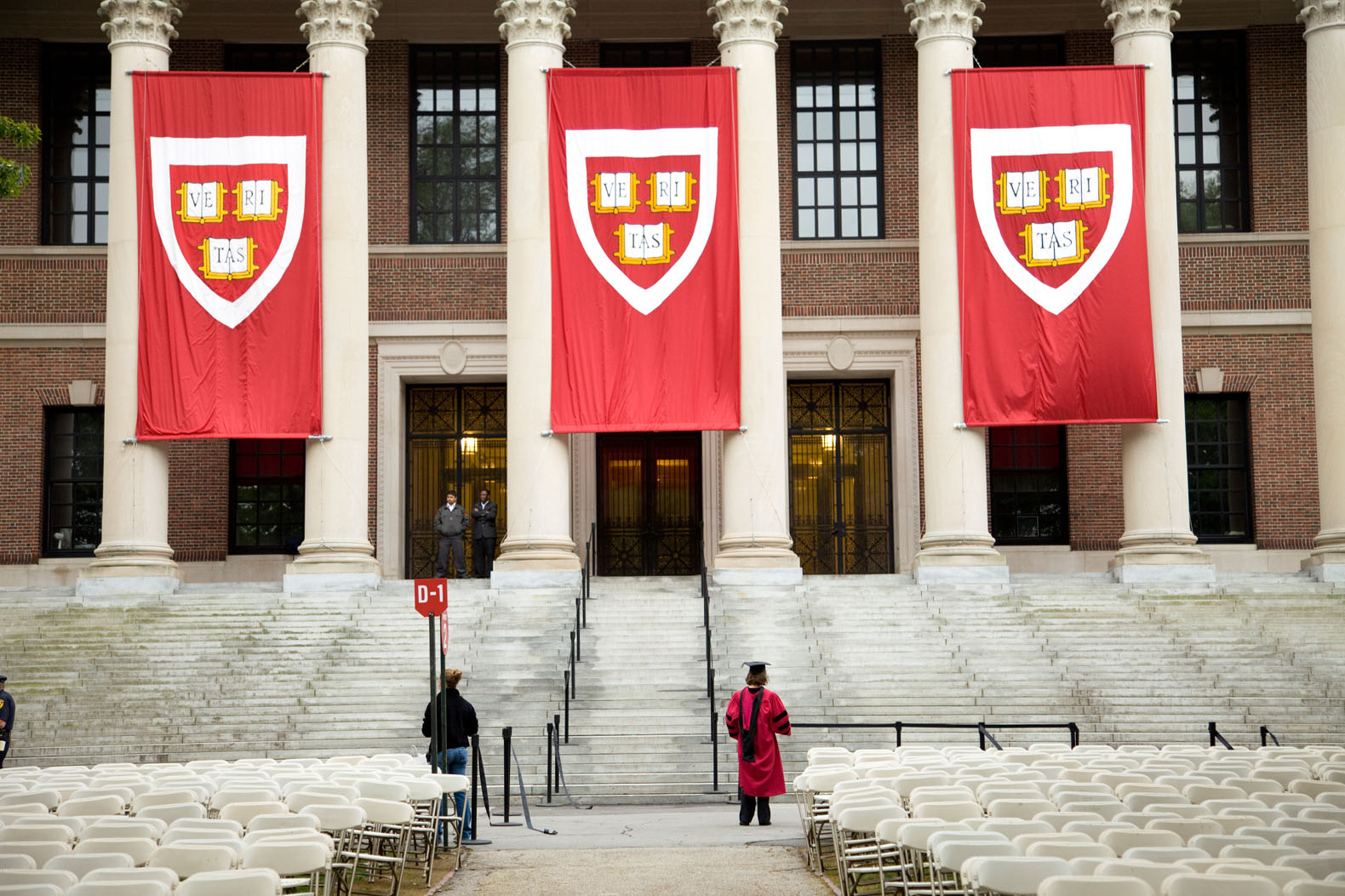Top Stories
Harvard Thinks Rich People Are Better Than You
Harvard admissions officials contend that Asians have lower scores on measures of personality, including items for courage, likability, kindness and being “widely respected.

In an expert analysis commissioned to defend Harvard’s admissions practices against a lawsuit, claiming the elite university discriminates against Asian-American applicants, economist David Card explains that the school uses a complicated multivariate analysis that balances applicants’ academic records with a host of other factors.
Asian Americans are significantly overrepresented among the highest-scoring college applicants in the United States. And an internal Harvard study from 2013 determined that, if admissions committees only considered academic qualifications, the proportion of Asians among Harvard students would rise from about 19 percent to about 43 percent. However, Harvard admissions officials contend that Asians have lower scores on measures of personality, including items for courage, likability, kindness and being “widely respected.”
Card’s analysis shows that while Asians are disproportionately represented among the highest academic achievers, white applicants are more likely to score higher on the personality factors, and more likely to be considered multifaceted applicants. But is Harvard really choosing multifaceted white people with sparkling personalities over one-dimensional Asian academic grinds? Or are scores for “likability” and “kindness” really proxies for other qualities that Harvard doesn’t want to admit are admissions factors?
Who has the best personalities?
One of Card’s claims is that stellar academic credentials are so common among Harvard applicants as to be unremarkable. Harvard accepts only about 1,800 students per year, but gets over 8,000 applications from students with perfect GPAs, 3,450 applications from students with perfect SAT math scores, and 2,741 applications from students with perfect SAT verbal scores.
In other words, there are more students with flawless academic qualifications than there are seats at Harvard. So, in order to differentiate among this uniformly superb cohort, Harvard must examine the “whole student” to determine which applicants possess other “distinguishing excellences,” as measured by the personality sections of the admissions metric. Who possesses such excellences? You can look at the students Harvard admits to see what kinds of people it thinks are nicer, braver, less one-dimensional and more likeable than the academically-accomplished Asians it rejects.
Thirty percent of the students admitted to Harvard are “legacies,” or children of Harvard alumni. The median family income of Harvard students is $168,000, about triple the national median income. Fifteen percent of Harvard students come from families earning over $630,000 per year, which makes the wealthiest one percent of Americans the most overrepresented group in Harvard’s class. Only 20 percent of Harvard students come from families with annual household earnings below $65,000, so the wealthiest one percent earns nearly as many seats as the bottom two-thirds of the US population.
Harvard is not alone among elite schools in admitting the very wealthy in hugely disproportionate numbers. Among a group of 12 elite private US universities, seven had larger proportions of students from very rich families than Harvard.
While Harvard’s application pool is supposedly overflowing with students with superb academic credentials, a quarter of Harvard’s class scores below a 1470 combined math and verbal on the SAT, which means Harvard’s class actually has significant overlap on test scores with a number of much less-prestigious institutions.
Some of the admitted students in the bottom quartile of academic performers are members of underrepresented minorities. Although black Americans are significantly underrepresented among the highest academic achievers, Harvard’s class of 2021 is 14.6 percent black, perfectly in proportion to the percentage of Americans who are black. Admissions officials use extensive racial preferences to reach that precise number. Harvard insists it has no quota for black enrollment and no cap on Asian enrollment, but the median Asian student admitted to an elite college has a composite SAT score 450 points higher than the median black student, and, at Harvard, an academic record that gives an Asian applicant only a 25 percent chance of getting in nearly guarantees admission to a black applicant.
But many lower achievers get into Harvard by virtue of other preferences. In addition to a direct admissions “tip” for legacies, there is a “Dean’s Interest List” of special-case applicants whose admission is advocated by the administration. Harvard has redacted most discussion of this list from the public version of its expert report, as well as nearly all information about how Harvard treats the very wealthy, the very powerful, and its large donors. However, journalist Daniel Golden got hold of a list of Harvard’s top 400 donors, and determined that most of them had gotten their children admitted. He has also reported extensively on the widespread practice of administrative intervention in the admissions process on behalf of the children of the wealthy.

On top of legacy preferences and special administrative admissions advocacy for the rich and powerful, there is also a special group of 50 to 60 students each year called the “Z-List.” These are candidates who Harvard wants, but whose academic credentials are so deficient that it can’t let them in through normal admissions. They are admitted on the condition that they defer enrollment for a year, so their scores don’t have to be reported as part of the incoming class. This group is mostly white, and nearly half the students on it are legacies. Black students made up only 2 percent of students admitted through deferred admissions; about one student per year. The students on the Z-list almost all come from rich families; Harvard says it does not admit economically disadvantaged students under its deferred admissions program because poorer students are less able to take a gap year before matriculating.
Card’s mathematical models purport to show that when all the personal factors are weighed along with academics, Asians are no longer underrepresented in Harvard’s class relative to their performance as measured by the multifaceted admissions metric. But in light of the admissions success of legacies, the children of top donors, and the children of wealthy, famous and powerful people, there is a lot of reason to be skeptical of the methodology by which admissions committees assess the personalities of applicants. It seems the people who best demonstrate all the personal qualities Harvard desires are traditional white elites.
Maybe Harvard is right. Maybe the rich really are better people than the rest of us. But does anyone really believe there exists any situation in which the scion of a Fortune 500 CEO or a senator with strong academic credentials would be dinged for being insufficiently likable?
“Holistic” admissions have an ugly history. When objective measures of accomplishment like standardized test scores admit too many members of undesirable racial and ethnic backgrounds to elite educational institutions, schools have a long history of using subjective measures to redefine “merit” in order to continue to admit favored groups. In other words, holistic admissions were invented to exclude Jews.
In 1922, Harvard’s Board of Overseers created a committee at the direction of university president Abbott Lowell to assure that the school’s student body was “properly representative of all groups” and provided “equal opportunity.” At the time, Harvard did not admit women and had very few black students, and this committee didn’t change that; its real goal was to reduce the number of Jews admitted to the school.
This committee built the framework that Harvard still uses in admissions today. It started considering applicants’ geographic origin within the United States to favor areas where there were few Jews. Harvard began giving considerable weight to letters of recommendation from officials at “feeder” schools which tended to be private institutions that enrolled white Protestant elites and excluded Jews. And admissions committees began using subjective assessment of applicants’ “character” and “leadership” capabilities, in which they considered Jews to be lacking. In the early 1950s, Harvard Admissions dean Wilbur J. Bender described the ideal Harvard man as a “well-dressed, polite, Nordic blonde from a family with an income of $20,000 a year and up ($208,000 in inflation-adjusted 2018 dollars), living in a swanky suburb.” The use of these subjective and non-academic criteria for admissions severely curtailed Jewish enrollment until the 1960s, and now elite schools seem to be doing the same thing to Asians.
Today traditionally underrepresented minorities are favored in admissions, which allows officials to claim they employ these discriminatory policies in the interest of progressive ideals and social justice. However the demographics of Harvard’s recent classes show that admissions committees still use subjective measures to imbue rich whites with “distinguishing excellences” which are given more weight than the objective academic excellence of applicants who don’t have the connections or wealth that open Harvard’s various side doors.
Card argues that academically superior Asians’ low personality scores render them less competitive against more virtuous white applicants, and that this explains the disparity between Asian test scores and Asian admissions. But that assumes that subjective admissions criteria and personality assessments are measurements that have integrity. But you can look at who Harvard admits instead of Asians applicants and see that the qualities Harvard truly prefer have nothing to do with courage, leadership or kindness. These subjective admissions criteria were invented to justify discrimination and nepotism, and there is no evidence they’ve ever been used for any other purpose.
The fact that Asians tend to score lower on Harvard’s personality metrics just means that Harvard deducts points from qualified Asians to justify rejecting them, while using the same subjective criteria to award extra points to preferred applicants in order to make them appear stronger.






